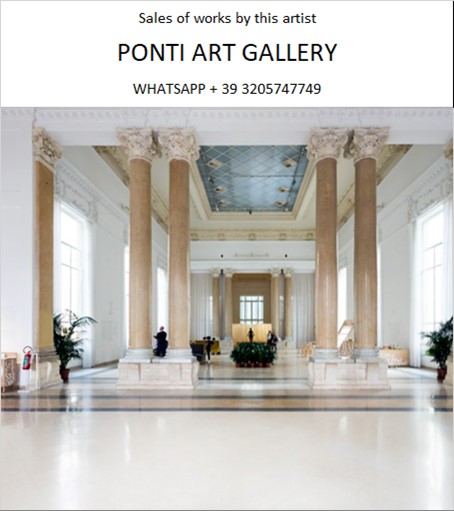Ponti Art Gallery is interested in buying and selling works
of art by this artist.

Dwight-William Tryon Biography
Dwight William Tryon was an American landscape painter whose career spanned the late 19th and early 20th centuries. He is renowned for his tonalist landscapes and seascapes, which are characterized by their subtle play of light and atmospheric mood. Born on August 13, 1849, in Hartford, Connecticut, Tryon's life was marked by an early tragedy when his father was killed in a gun accident before Dwight reached the age of four. Raised by his mother on his grandparents' farm in East Hartford, Tryon developed a natural interest in art.
As a young man, Tryon worked at a prominent Hartford bookstore, where he had access to art instruction manuals. He utilized these resources to teach himself the basics of painting and drawing. During his off hours, he would sketch the surrounding countryside, honing his skills and developing a deep appreciation for the natural landscape. Tryon sold his first painting in 1870, and after successfully exhibiting at the National Academy of Design in 1873, he decided to pursue art full-time. He married Alice Belden and left his job at the bookstore to dedicate himself to his craft.
Tryon's early works were seascapes and harbor views executed in a luminist manner, reflecting the influence of the Hudson River School. However, his style evolved as he became increasingly interested in the Barbizon school of painting, which emphasized a more naturalistic and pastoral depiction of the landscape. In 1876, determined to advance his skills, Tryon sold all of his paintings at auction and, with the help of a benefactor, traveled to France with his wife. There, he enrolled in the atelier of Jacquesson de la Chevreuse and attended classes at the École des Beaux-Arts. He received instruction from notable artists such as Charles-François Daubigny, Henri Harpignies, and Jean Baptiste-Antoine Guillemet.
During his time in France, Tryon was exposed to Impressionism, which was flourishing around him. However, he was not swayed by this new style and remained aligned with the Barbizon school. Upon returning to the United States in 1881, Tryon settled in New York City, where he taught and painted landscapes. He became friends with artists such as Robert Swain Gifford and Thomas Dewing and joined the Society of American Artists. He also became a member of the American Water Color Society and the National Institute of Arts and Letters.
Tryon's patron, Charles Lang Freer, founder of the Freer Gallery of Art, played a significant role in his career. Freer's support allowed Tryon to establish himself as a leading figure in American Tonalism. Tryon's work was recognized with several awards, including the Third Hallgarten Prize by the National Academy of Design in 1887 and the Carnegie Prize at the Carnegie Exhibition of 1908 at the Carnegie Museum of Art.
In addition to his painting, Tryon was a dedicated educator. He taught at Smith College from 1886 to 1923, visiting part-time to critique students' work. Late in his career, he established the Tryon Gallery of Art at the college. His teaching philosophy was likely influenced by his own self-taught beginnings and his formal education in France.
Tryon's personal life was marked by a close relationship with his wife, Alice, with whom he traveled and sketched across Europe. The couple built a summer house in South Dartmouth, Massachusetts, in 1887, on the advice of his friend Gifford. This home became a retreat where Tryon could immerse himself in the New England landscape that inspired much of his work.
Dwight William Tryon's paintings are celebrated for their delicate coloring and idyllic depictions of rural life. His landscapes often feature apple trees in bloom, cornfields, and serene valleys, all rendered in a silvery-gray atmosphere that became his signature. His works are held in high esteem and are sought after for their artistic beauty and the tranquility they evoke.
Tryon passed away from cancer on July 1, 1925, in South Dartmouth, leaving behind a legacy as one of America's first Tonalist painters and a significant influence on the American art scene. His papers, including correspondence, photographs, a sketchbook, and newspaper clippings, can be found at the Freer Gallery of Art and Arthur M. Sackler Gallery Archives in Washington, D.C. His work continues to be admired and studied for its contribution to the Tonalist movement and its enduring beauty.
Dwight-William Tryon Quotes
and Sales of Works
Ponti Art Gallery selects and deals with paintings by the
artist. Upon request, we provide free estimates and
evaluations, communicate prices, quotations, and current
market values.
If you are interested in BUYING or SELLING works by the
artist, contact us immediately.
If you wish to sell or receive an evaluation of the
works:
Send us a frontal photo of the painting, one of the back,
and one of the signature. Also, indicate the dimensions of
the work. Inform us about the purchase origin of the work
and any kind of available documentation (purchase
receipts, certificates of authenticity, publications). One
of our operators will respond to you on the same day. We
guarantee maximum confidentiality and extreme
professionalism.
If you wish to purchase works by the painter: Contact us
and let us know your request. We will inform you about the
available works. We also offer the possibility to
subscribe to our NEWSLETTER, through which you will be
informed at the beginning of each month about the latest
acquisitions of the art gallery.
You can send us pictures of the work:
